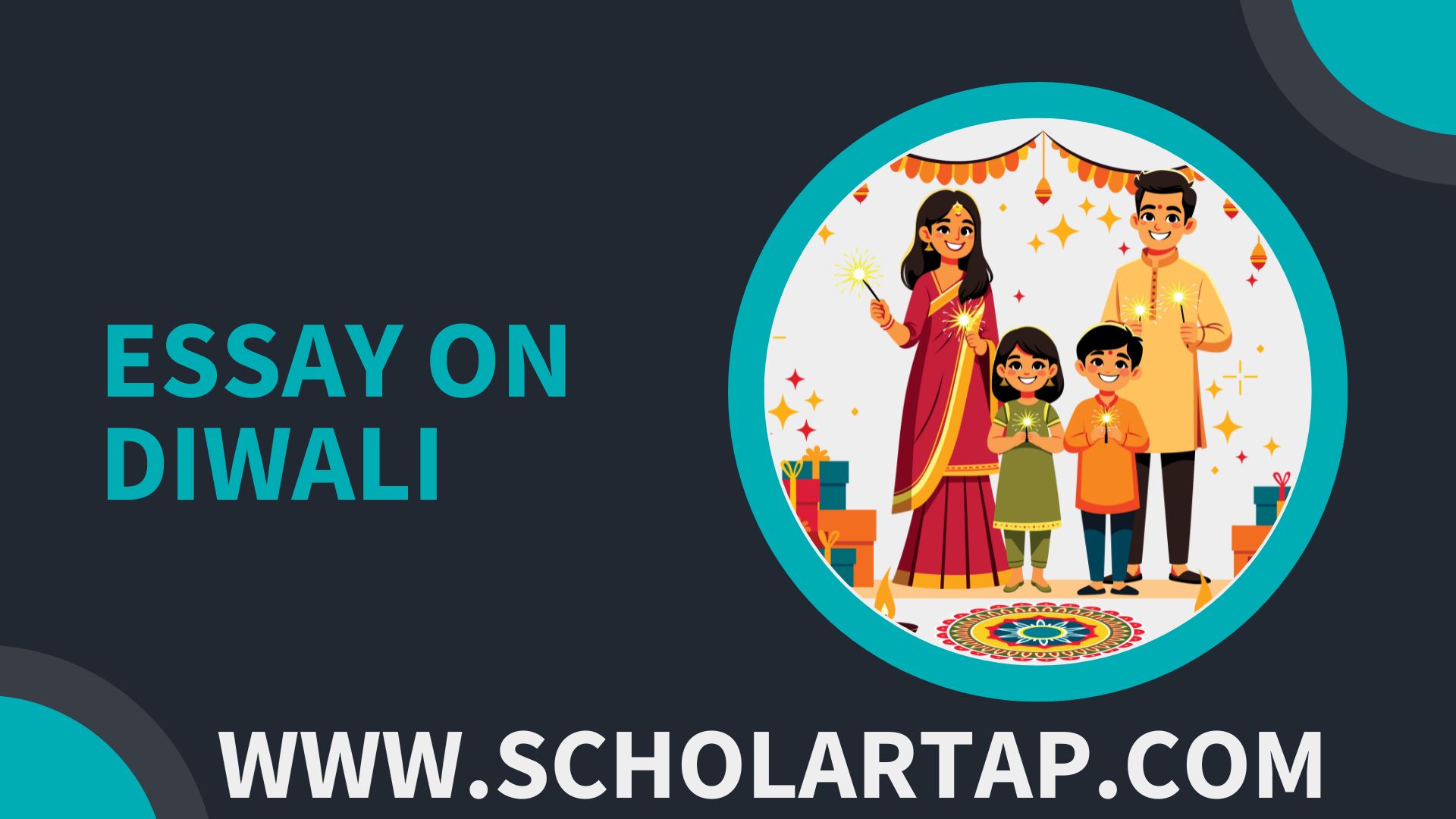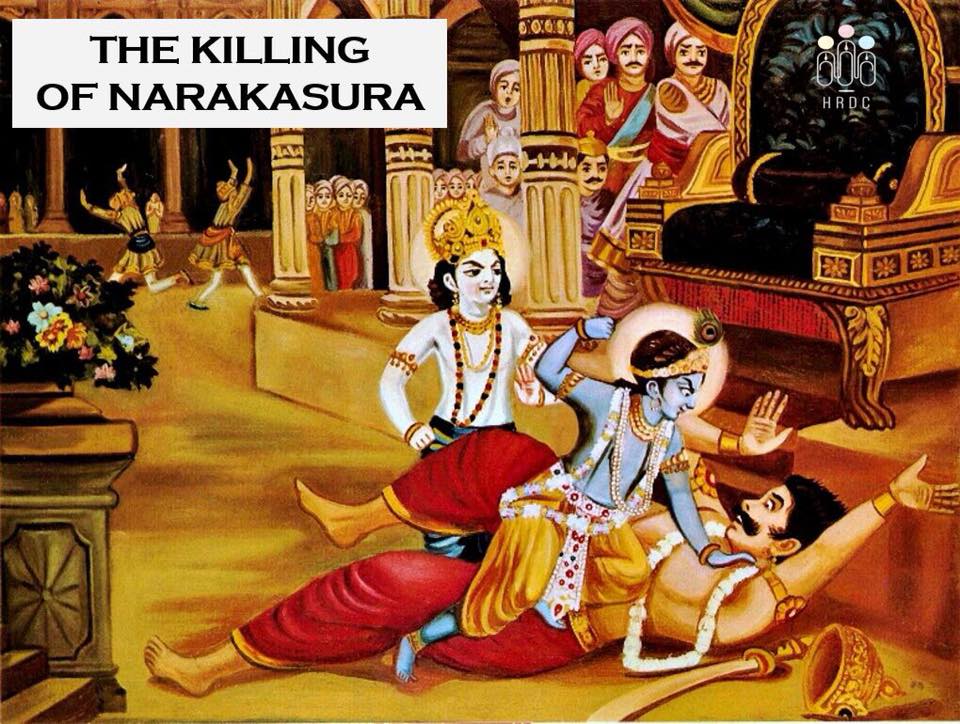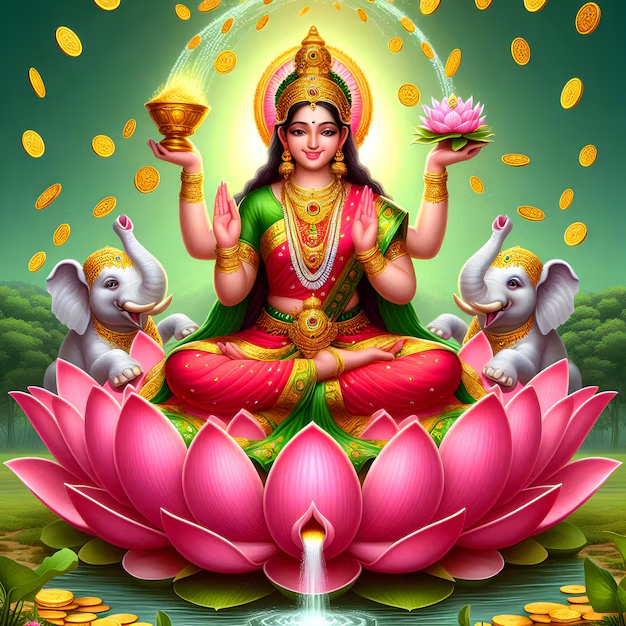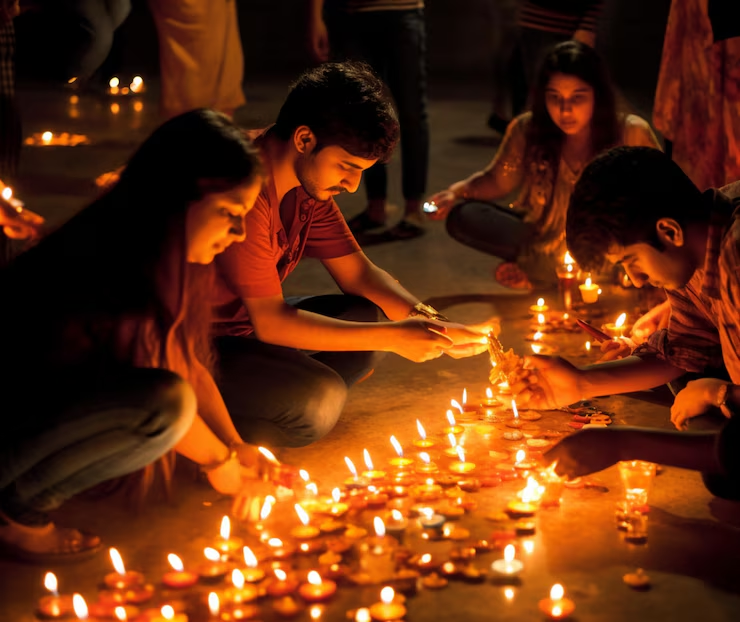 Diwali, often referred to as the “Festival of Lights,” is one of the most significant and celebrated festivals in India and across the globe. It symbolizes the victory of light over darkness, good over evil, and knowledge over ignorance. The festival is marked by dazzling lights, colorful decorations, firecrackers, and an array of delicious foods. Diwali is celebrated by millions, not only in India but also by Indian communities worldwide. This festival transcends religions and regions, bringing people together in a spirit of joy, happiness, and unity.
Diwali, often referred to as the “Festival of Lights,” is one of the most significant and celebrated festivals in India and across the globe. It symbolizes the victory of light over darkness, good over evil, and knowledge over ignorance. The festival is marked by dazzling lights, colorful decorations, firecrackers, and an array of delicious foods. Diwali is celebrated by millions, not only in India but also by Indian communities worldwide. This festival transcends religions and regions, bringing people together in a spirit of joy, happiness, and unity.
This article delves into the rich history, cultural importance, traditions, and the way Diwali is celebrated worldwide. From the legends behind the festival to the modern-day celebrations, we’ll explore every facet of Diwali.
History of Diwali
The origin of Diwali can be traced back thousands of years, with roots deeply embedded in Hindu mythology, culture, and tradition. Different regions of India have their own legends associated with Diwali, making it a festival with diverse narratives.
1. The Legend of Lord Rama
![]()
One of the most popular legends behind Diwali is the story of Lord Rama. According to the Hindu epic, the Ramayana, Lord Rama, his wife Sita, and brother Lakshmana returned to their kingdom, Ayodhya, after 14 years of exile. During this period, Lord Rama defeated the demon king Ravana, symbolizing the victory of good over evil. The people of Ayodhya celebrated his return by lighting oil lamps, called diyas, to illuminate the city, signifying the victory of light over darkness. This tradition continues to this day, with millions lighting diyas during Diwali.
2. The Story of Lord Krishna and Narakasura

In some parts of India, Diwali is linked to the story of Lord Krishna’s triumph over the demon king Narakasura. According to mythology, Narakasura was a tyrant who ruled over a large kingdom. He kidnapped 16,000 women and terrorized his people. Lord Krishna, with the help of his wife Satyabhama, defeated Narakasura and freed his captives. This event is celebrated as Naraka Chaturdashi, a day before Diwali.
3. The Goddess Lakshmi

Diwali is also closely associated with the worship of Goddess Lakshmi, the Hindu goddess of wealth, prosperity, and fortune. According to mythology, on the night of Diwali, Goddess Lakshmi emerged from the ocean during the churning of the cosmic ocean, also known as Samudra Manthan. Thus, the festival is seen as a celebration of prosperity and wealth, with people worshipping Lakshmi to seek her blessings for the upcoming year.
4. The Legend of King Bali
In Southern India, Diwali is celebrated as the day when Lord Vishnu, in his dwarf incarnation, defeated the demon king Bali. Vishnu’s act of subduing King Bali is symbolic of curbing arrogance and promoting humility. This legend adds another dimension to Diwali, emphasizing devotion and the triumph of humility over pride.
The Significance of Diwali
Diwali is more than just a religious festival; it holds a deeper spiritual and cultural significance for people across different communities and religions. Here’s what makes Diwali special:
1. Spiritual Significance
Diwali is a time for self-reflection, prayer, and meditation. The lighting of lamps is symbolic of dispelling darkness from one’s life and mind. It represents the inner spiritual light that can protect against negativity and darkness. Many people use Diwali as an opportunity to turn over a new leaf, letting go of past grievances and embracing a brighter future.
2. Social and Cultural Importance
Diwali is a festival that brings people together. It’s a time when families reunite, neighbors exchange sweets, and communities engage in celebrations together. The festival fosters a sense of belonging, unity, and joy, transcending differences in caste, creed, and religion.
3. Economic Impact
Diwali is a significant time for the economy in India. The festival marks the beginning of the financial year in some regions and is considered an auspicious time for making investments, buying new properties, and starting new ventures. Many businesses offer discounts and sales, and the retail sector witnesses a boom during Diwali, making it a crucial period for the economy.
How Diwali is Celebrated Across India
Diwali celebrations differ from region to region, each adding its unique touch to the festivities. Let’s explore how this festival is celebrated in various parts of India:
1. Northern India
In the northern states of India, Diwali is celebrated with great enthusiasm and grandeur. People clean their homes, decorate them with vibrant rangoli patterns, and adorn the doors with marigold flowers and toran (door hangings). The worship of Goddess Lakshmi and Lord Ganesha is a key ritual, followed by lighting diyas, bursting firecrackers, and feasting on sweets like gulab jamun, ladoo, and barfi.
2. Western India
In Gujarat and Maharashtra, Diwali is celebrated as the beginning of the New Year. People perform special rituals to honor Goddess Lakshmi, light oil lamps, and draw intricate rangoli designs. Gambling is a popular activity during Diwali in Western India, as it is believed to bring good luck and prosperity for the upcoming year.
3. Southern India
In the southern states, Diwali, or Deepavali, is celebrated to mark Lord Krishna’s victory over Narakasura. The day begins with a traditional oil bath, followed by the wearing of new clothes, lighting of oil lamps, and bursting firecrackers. Sweets like mysore pak and adhirasam are prepared, and homes are decorated with kolam (rangoli made with rice flour).
4. Eastern India
In West Bengal, Diwali is celebrated as Kali Puja, a festival dedicated to the worship of Goddess Kali. Homes are decorated with oil lamps, candles, and colorful rangoli designs. People offer prayers to Goddess Kali, perform aarti (prayer rituals), and burst firecrackers. Sweets like rasgulla and sandesh are popular during this time.
Traditional Rituals of Diwali
1. Cleaning and Decorating Homes
One of the key rituals before Diwali is the thorough cleaning of homes. It is believed that Goddess Lakshmi visits clean and well-lit homes, so families go to great lengths to tidy up and beautify their living spaces. Rangoli designs, made with colored powders, flowers, or rice, adorn the entrance to welcome guests and deities.
2. Lighting of Diyas and Candles

Lighting oil lamps, diyas, and candles is a core tradition of Diwali. These lights are placed around the home, in temples, and even floated in rivers. The bright glow signifies the victory of good over evil and is a sight to behold, especially during the night of Diwali.
3. Puja and Worship
Diwali is synonymous with worship, particularly of Goddess Lakshmi, who is the goddess of wealth and prosperity. People perform Lakshmi Puja with great devotion, offering sweets, fruits, flowers, and incense. Lord Ganesha, the remover of obstacles, is also worshipped during this time.
4. Fireworks and Firecrackers
Bursting firecrackers is a time-honored tradition during Diwali. The sound of fireworks is believed to drive away evil spirits and negativity. While firecrackers are a symbol of joy and celebration, in recent years, there has been a growing awareness about noise pollution and environmental impact, leading to the rise of eco-friendly crackers.
5. Exchanging Gifts and Sweets
Diwali is a time for giving and sharing. Friends, families, and neighbors exchange gifts, sweets, and dry fruits. Popular Diwali sweets include kaju katli, ladoos, soan papdi, and jalebi. These exchanges strengthen bonds and create a sense of togetherness.
Special Foods and Recipes for Diwali
Food plays an essential role in Diwali celebrations. Every region has its traditional recipes and delicacies that are prepared for the festival. Here are some must-have dishes:
1. Sweets (Mithai)
- Gulab Jamun: Soft, syrupy, and delicious, these sweet balls are a favorite during Diwali.
- Kaju Katli: A rich cashew-based sweet, thinly sliced and often decorated with silver leaf.
- Rasgulla: Spongy and soaked in sugar syrup, rasgulla is a Bengali delicacy enjoyed during Diwali.
2. Savory Snacks
- Chakli: A spiral-shaped crispy snack made from rice flour, perfect for munching during celebrations.
- Samosas: Deep-fried pastries filled with spicy potatoes, peas, and sometimes meat.
- Mathri: A flaky and crunchy snack, often served with a cup of tea.
3. Festive Drinks
- Thandai: A refreshing and mildly spiced drink made from milk, almonds, saffron, and spices.
- Badam Milk: Warm milk infused with ground almonds, saffron, and cardamom, perfect for a chilly Diwali night.
Eco-Friendly Diwali: A Growing Trend
In recent years, there has been increasing awareness about celebrating Diwali in an environmentally friendly manner. The excessive use of firecrackers causes pollution, harms wildlife, and affects people with respiratory issues. As a result, many have started adopting eco-friendly practices for Diwali.
1. Green Firecrackers
Eco-friendly firecrackers that produce less noise and smoke have been introduced as an alternative to traditional fireworks. These “green crackers” reduce air and noise pollution and are becoming more popular, especially in urban areas.
2. Organic Rangoli
Using natural and biodegradable materials for rangoli designs is another growing trend. Instead of chemical-based powders, people are using flowers, rice flour, and natural dyes to create beautiful patterns.
3. Reducing Waste
Sustainable practices like using reusable decorations, avoiding plastic, and minimizing waste are gaining traction. Some families are opting for eco-friendly Diwali decorations made from bamboo, clay, and other biodegradable materials.
Global Celebrations of Diwali
While Diwali is primarily celebrated in India, it has spread far and wide due to the global Indian diaspora. Here’s how some countries celebrate Diwali:
1. Diwali in the USA
In the United States, Diwali is celebrated with community gatherings, cultural performances, and festive fairs. Major cities like New York, Houston, and San Francisco host grand Diwali events, often featuring fireworks, music, and dance performances.
2. Diwali in the UK
The UK, home to a large Indian population, celebrates Diwali with gusto. The city of Leicester, in particular, holds one of the biggest Diwali celebrations outside India, with dazzling lights, street food stalls, and firework displays.
3. Diwali in Singapore and Malaysia
In Singapore and Malaysia, Diwali is a public holiday. The streets are illuminated with lights, and people visit temples to offer prayers. The vibrant decorations in Little India, Singapore, are especially famous during the Diwali season.
Conclusion
Diwali is a festival that transcends cultural boundaries, spreading the message of light, hope, and unity. It is a time for self-reflection, family bonding, and celebration of life’s blessings. Whether it’s the rich mythology behind the festival, the glittering decorations, or the delicious food, Diwali offers something for everyone.
As the world becomes more connected, Diwali continues to shine as a beacon of joy, bringing people together to celebrate life’s victories, big and small.
Leave a Reply